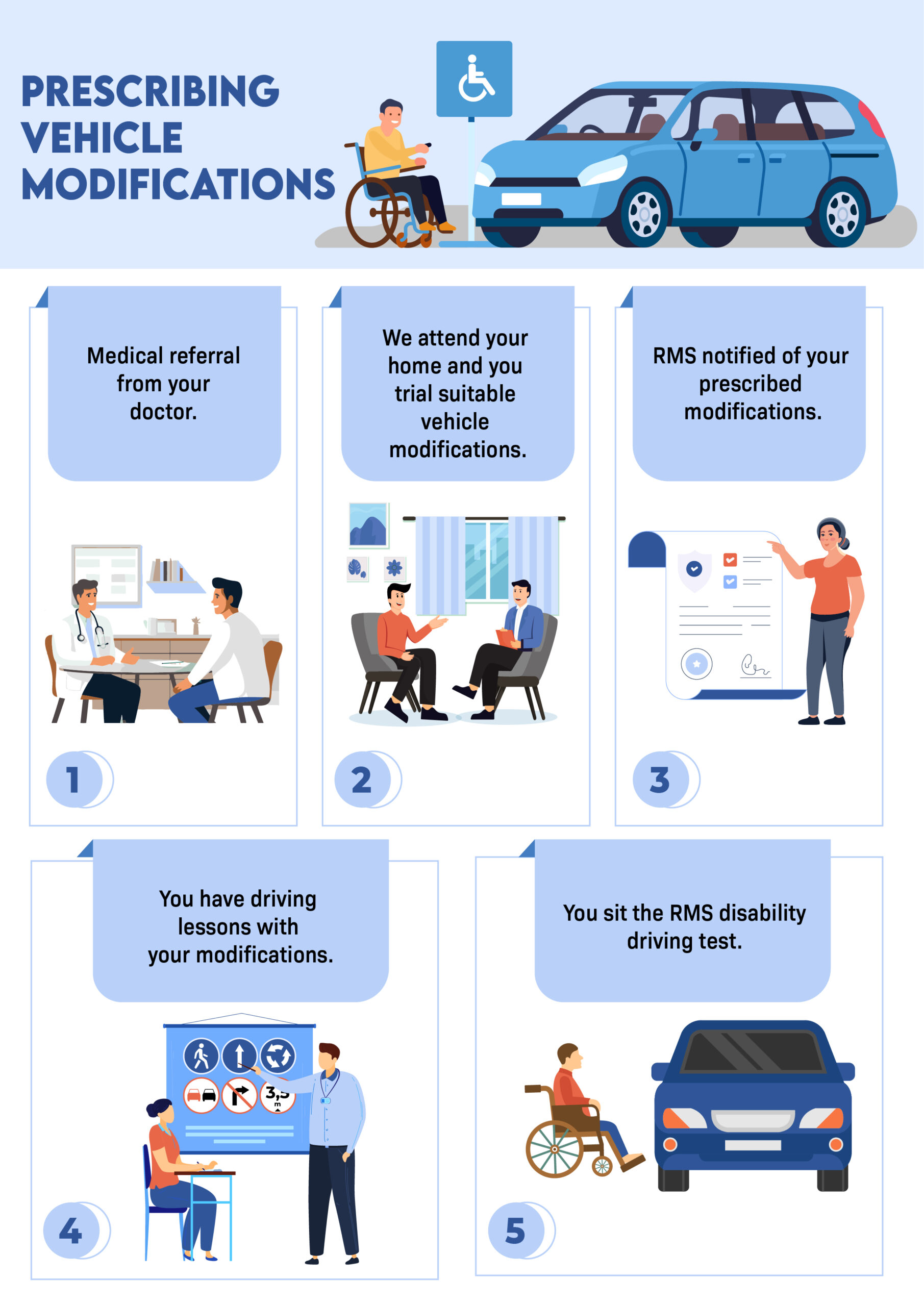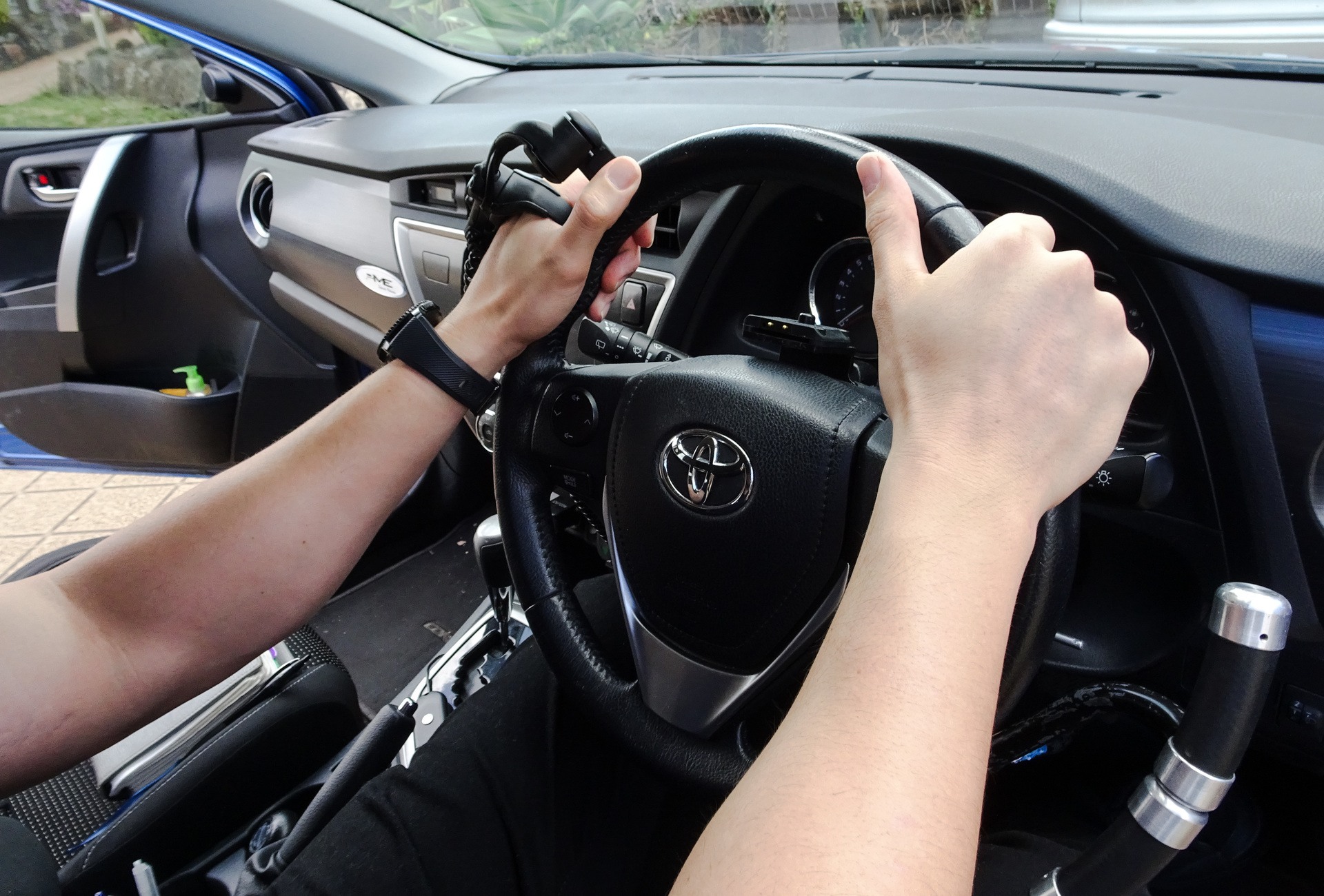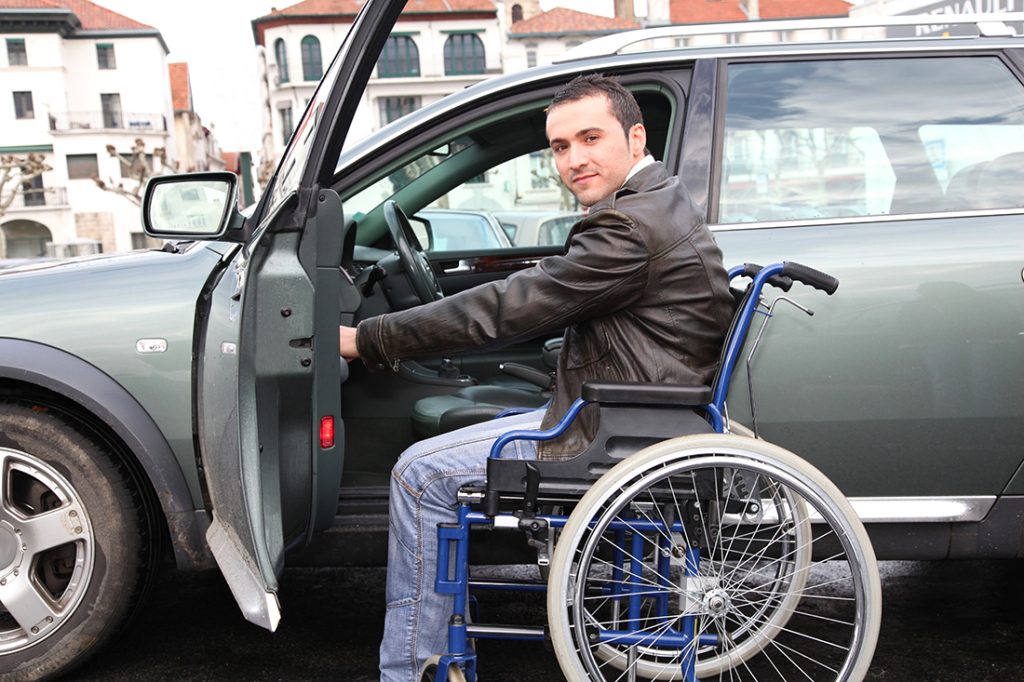What is a vehicle modification?
Vehicle modifications are any changes made to a vehicle that transforms it from its original (manufacturer’s) condition. This can range from modifications to amend the performance and/or physical attributes of the vehicle (e.g. changes to the engine or exhaust system, or changing the body kit of the car), to the installation of specialised equipment to make the vehicle easier to operate or access for the driver or passengers. For the purpose of this article, vehicle modifications will refer to equipment that is added to a vehicle so that its driver can safely use or access the vehicle (modifications for passengers will not be thoroughly explored).
Commonly prescribed vehicle modifications include:
- Left foot accelerator
- Pull-push brake and accelerator
- Over-Ring accelerator
- Satellite accelerator
- Electronic steering wheel aid

Who needs a vehicle modification?
A vehicle modification may be necessary when a person’s medical condition (which is physical in nature) is affecting their ability to drive or safely use the car. Often, this means that the driver has a physical disability that prevents them from driving safely and to RMS standards, where their ability to physically control the vehicle is compromised. This can also include modifications to make transfers into and out of the car possible or safer for the person (using hoists or ramps) or modifications to ensure that necessary equipment for the person (e.g. wheelchair) is stowed away securely. Modifications may also be installed so a passenger of the vehicle can safely access and transfer in/out of the vehicle, such as a hoist or ramp.
Common medical conditions that may require vehicle modifications to drive safely include:
- Cerebral palsy
- Spina bifida
- Limb amputations (including amputations of more than 3 fingers in one hand)
- Spinal cord injuries or disease, including paraplegia and hemiplegia
- Severe loss of function in one or both legs
- Severe loss of function in one or both hands
In NSW, the process for assessing driving with vehicle modifications is a thorough one to ensure that the person can drive safely and be as independent as possible.
What is involved when assessing driving with vehicle modifications?
The process for driving with vehicle modifications can be divided into two categories: drivers with a current licence and new drivers (learner drivers). In either situation, the first step is for the person to obtain a medical review, report and medical clearance to drive and undergo an Occupational Therapy (OT) driving assessment. It is to be noted that a doctor has the authority to recommend to the RMS that a person should not be driving due to their medical condition, thereby recommending a cancellation of the person’s licence.
If the person’s doctor determines that they require an OT driving assessment to decide fitness to drive and specify modifications, they may refer the person to a particular OT service, or the person may have to search for a suitable service themselves. OTs who perform these specific assessments have completed specialised training, so not all OTs have this recognised qualification. An OT that performs these assessments is called a Driver Trained Occupational Therapist, and they have the authority to prescribe vehicle modifications so the person can drive in accordance with legal standards. Driver Trained OTs work in collaboration with Rehabilitation Trained Driving Instructors. These specialised driving instructions have also completed a qualification to work specifically with people with medical conditions and train people to use vehicle modifications.
The OT driving assessment involves:
- Off-road assessment where the OT looks at the person’s vision, cognition and physical abilities. This is to detect any obvious issues or deficits in the three essential areas of driving. Drivers requiring vehicle modifications will have some sort of physical disability.
- On-road assessment where the person is asked to drive for one hour with the OT and driving instructor, using the instructor’s vehicle. Depending on the person’s medical condition and current presentation, the OT may ask the person to try driving without vehicle modifications first (for example, where the driver has suffered a stroke and has some weakness in one arm). If it is assessed that the person cannot drive without vehicle modifications, the OT will trial an appropriate modification, which is then installed on the vehicle. The person will then try driving with the modification. Often, the OT will trial more than one modification, giving the person more choice about which modification is more suitable for them to use.
- After the assessment, the OT and driving instructor will discuss with the person the outcome and subsequent recommendations. Once the person has decided on the vehicle modification(s) they would like to use, the OT will prescribe this in their report to the RMS. The OT will also recommend the number of lessons the person is to have to learn how to use the modification competently. Once the person has achieved this experience with the modification, they will go through the RMS disability test, which they will need to pass to have the modification legally endorsed on their driver’s licence. They will not be able to drive without the specific modification.
The process for learner drivers differs only in that learner drivers will need significantly more lessons and practice than experienced drivers to learn how to drive with the modifications.





